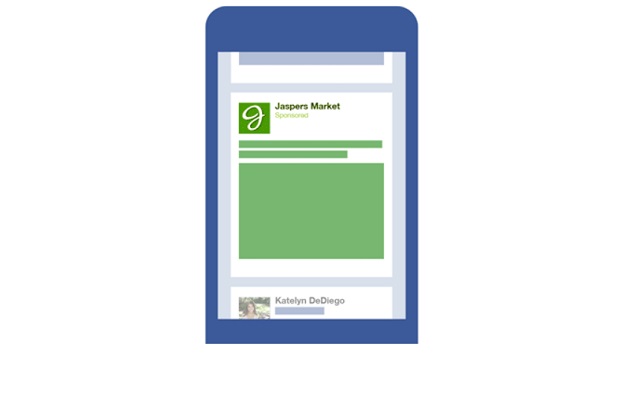Facebook is developing a service that will let advertisers pay for ads only when a user scrolls through the ad from top to bottom on its news feed.
The new service, called “100 percent in-view impressions”, will include text, photo, link and video ads, the company said in a blog post on Thursday.
Facebook currently charges for ads purchased on an impression basis the instant they come into view on users’ devices.
For example, marketers are charged immediately when the grey borders around their sponsored posts appear on-screen, even if none of their messaging is actually visible.
Under the new service, Facebook will let advertisers instead pay only when an entire ad passes completely through a user’s screen, or “viewport,” if they wish.
Using the new buying feature, an advertiser would not be charged if a user only scrolls far enough to view 20% or even 90% of an ad.
The scheme will likely run alongside Facebook’s existing ad platform, so marketers could have to pay a premium for the option, for both display and video ads.
Viewability debacle
The move is an attempt to combat growing criticism of ad viewability metrics, which many brands and advertisers feel is not an accurate way to measure the success of campaigns.
Some companies including Google have suggested that only half the online video ads across the Web are actually viewable.
Currently, Facebook and Google are using their own software to measure viewability rates, which has left many advertisers upset because they are more comfortable with having independent companies provide the proof that ads were seen.

Moat partnership
Facebook is also partnering with Moat, an ad analytics company, which would verify video ad metrics on Facebook.com to give advertisers details on the performance of their video campaigns.
In June, Twitter announced it would allow advertisers to use Moat to measure ad viewability on its service.
Google’s YouTube is also close to offering advertisers the ability to use third-party verification, some of the people familiar with the matter say. The Financial Times earlier reported that YouTube was preparing to offer independent ad verification.
“We’re committed to meeting all of our clients’ measurement needs through a combination of product innovation and industry partnerships,” said Google, in a statement. “We have further efforts planned in this area and are taking our clients’ feedback into account as we continue to roll out new solutions,”the company added.
Facebook is also offering advertisers the option to pay for ads when the entire ad unit appears on the users screen.
The Media Rating Council and Interactive Advertising Bureau issued guidelines last year that state that an online video ad should only be deemed viewable if at least 50% of the ad is visible on a user’s screen for at least two consecutive seconds.
Advertisers believe those guidelines are too lenient and have demanded more stringent measures from social media platforms and publishers.

